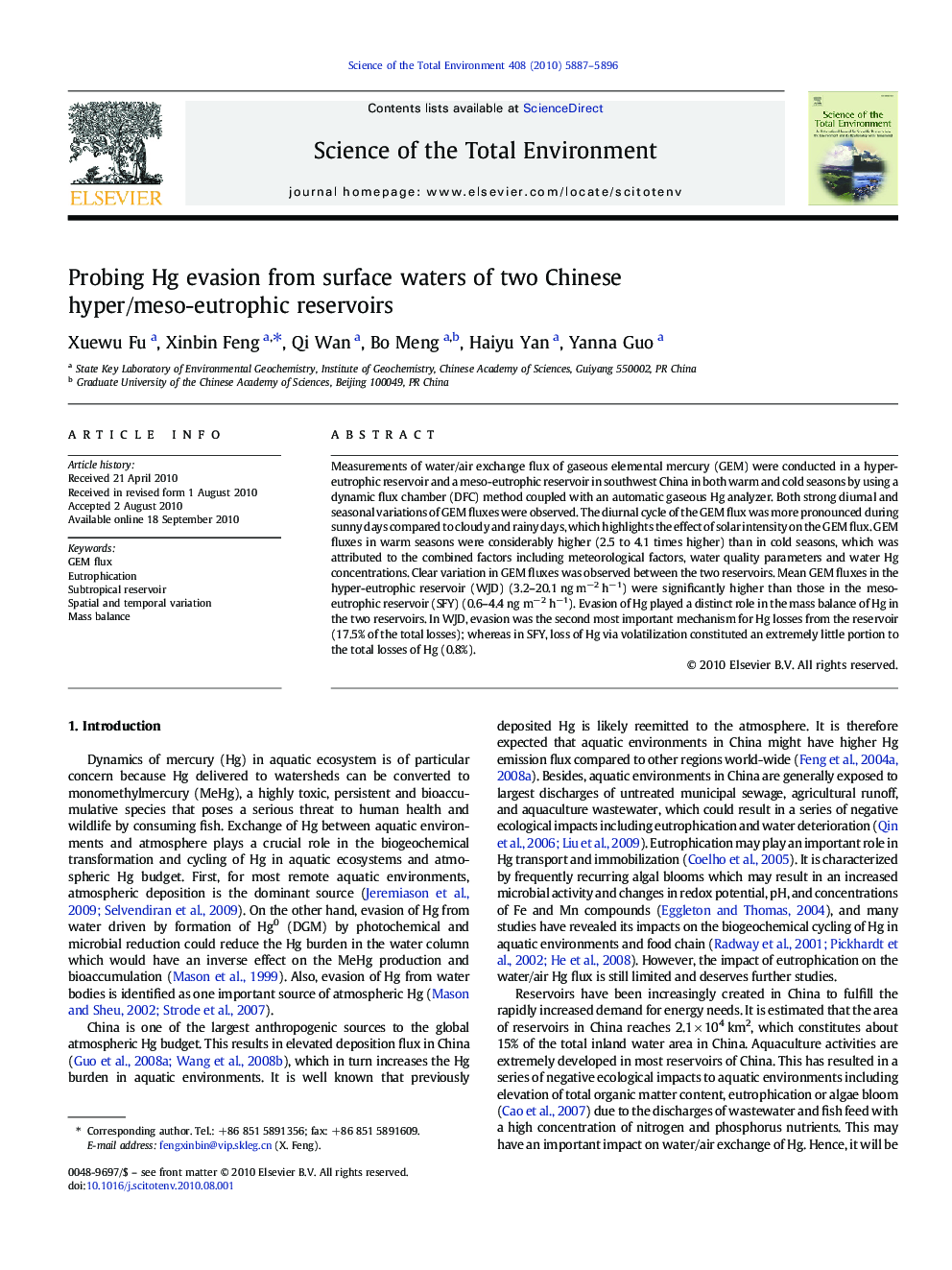| Article ID | Journal | Published Year | Pages | File Type |
|---|---|---|---|---|
| 4431387 | Science of The Total Environment | 2010 | 10 Pages |
Measurements of water/air exchange flux of gaseous elemental mercury (GEM) were conducted in a hyper-eutrophic reservoir and a meso-eutrophic reservoir in southwest China in both warm and cold seasons by using a dynamic flux chamber (DFC) method coupled with an automatic gaseous Hg analyzer. Both strong diurnal and seasonal variations of GEM fluxes were observed. The diurnal cycle of the GEM flux was more pronounced during sunny days compared to cloudy and rainy days, which highlights the effect of solar intensity on the GEM flux. GEM fluxes in warm seasons were considerably higher (2.5 to 4.1 times higher) than in cold seasons, which was attributed to the combined factors including meteorological factors, water quality parameters and water Hg concentrations. Clear variation in GEM fluxes was observed between the two reservoirs. Mean GEM fluxes in the hyper-eutrophic reservoir (WJD) (3.2–20.1 ng m−2 h−1) were significantly higher than those in the meso-eutrophic reservoir (SFY) (0.6–4.4 ng m−2 h−1). Evasion of Hg played a distinct role in the mass balance of Hg in the two reservoirs. In WJD, evasion was the second most important mechanism for Hg losses from the reservoir (17.5% of the total losses); whereas in SFY, loss of Hg via volatilization constituted an extremely little portion to the total losses of Hg (0.8%).
